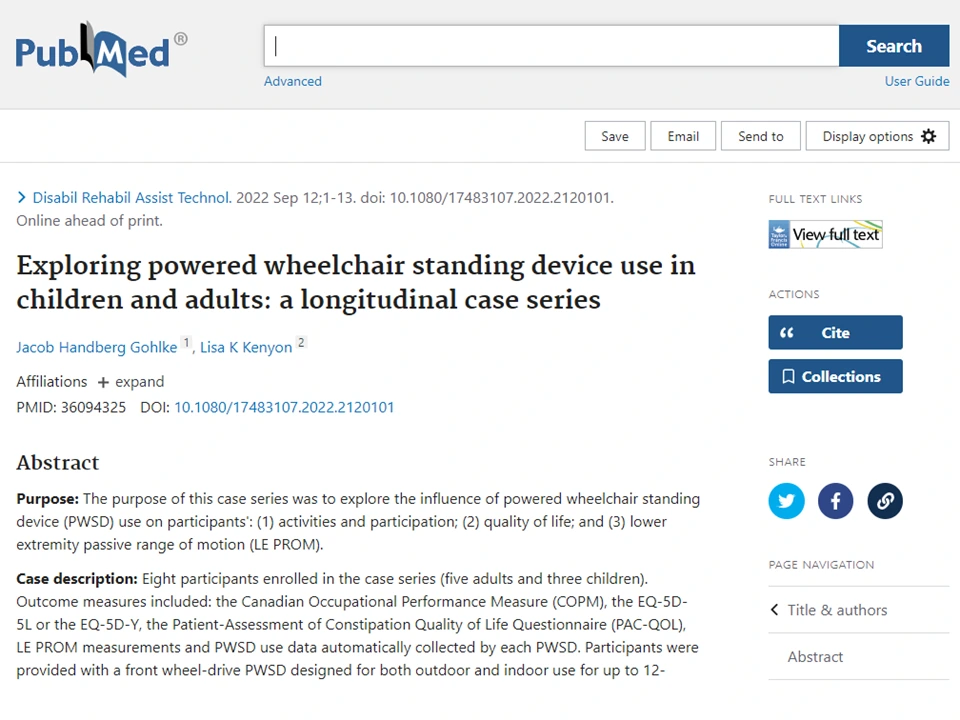- Clinical Research
- Research Library
- Scientific Publication: Exploring powered wheelchair standing device use in children and adults: a longitudinal case series
Scientific Publication: Exploring powered wheelchair standing device use in children and adults: a longitudinal case series

New collaborative research publication on Danish users who recently started standing in F5VS shows that standing was mostly done for short periods of time and driving in standing was found to be useful for the performance of daily activities.
This study was led by Aarhus Municipality in Denmark. Seven persons (four adults and three children) used an F5 Corpus VS (a front drive power wheelchair with standing functionality) and had at least one follow-up measurements available after 2, 6 and 12-months of F5 Corpus VS use. Three persons discontinued use of the F5 Corpus VS after six months; reasons included planned use at work not possible because of COVID-19, adjustments to seating system not possible because of COVID-19 and unsatisfied with the footprint of the wheelchair. Four persons completed the whole study with follow-up measurements after one year.
Permobil Connect data, data collected by sensors on the power wheelchair, was used to analyse how frequently the standing function was used. The total number of standing events ranged from 33 to 202 times, and the total hours of standing from 5 to 44 hrs. The average minutes of standing time per session ranged from 4 to 15 minutes. The standing feature thus seemed to be mostly used for short periods of time, likely to be for functional purposes. Standing for more than 30 minutes was not done frequently, the person who stood for longer periods frequently did it a total of 21 times during the whole study period.
Results further show that improvements in occupational performance (including e.g. turning on the water in the kitchen sink, participating in social activities, reaching for groceries on high shelves), with clinically significant improvements reported in three out of seven persons, non-significant improvements in two persons and stable scores in the other two persons. Persons commented that driving in standing also allowed them to assist with chores more easily and increased independence in several tasks. On the other hand, the size of the wheelchair base was a barrier to carrying out regular everyday activities, e.g. resulting in limited access to a small kitchen. This was particularly noted by adults, who had adapted their homes, activities of daily living and habits to accommodate the dimensions of their previous wheelchairs.
Six persons showed increases in passive range of motion of their lower limbs, and five persons showed a gain of between 5 and 40 degrees of passive knee flexion at one or both knees. Quality of life outcomes showed varied results both within and between persons, and no overall conclusions could be drawn. On the other hand, all persons who reported constipation (four out of four) at the onset of the study consistently showed improvements on the constipation quality of life measure, with three reporting on clinically significant improvements.
The authors stress the need to match the technology to the individual needs for a successful wheelchair provision. In this case, persons who were most successful in using the F5 Corpus VS were in environments in which they could use of the wheelchair during everyday activities. Persons who used the F5 Corpus VS more frequently, appeared to experience a more positive impact on their activities and participation, quality of life and passive range of motion of the lower limbs.
